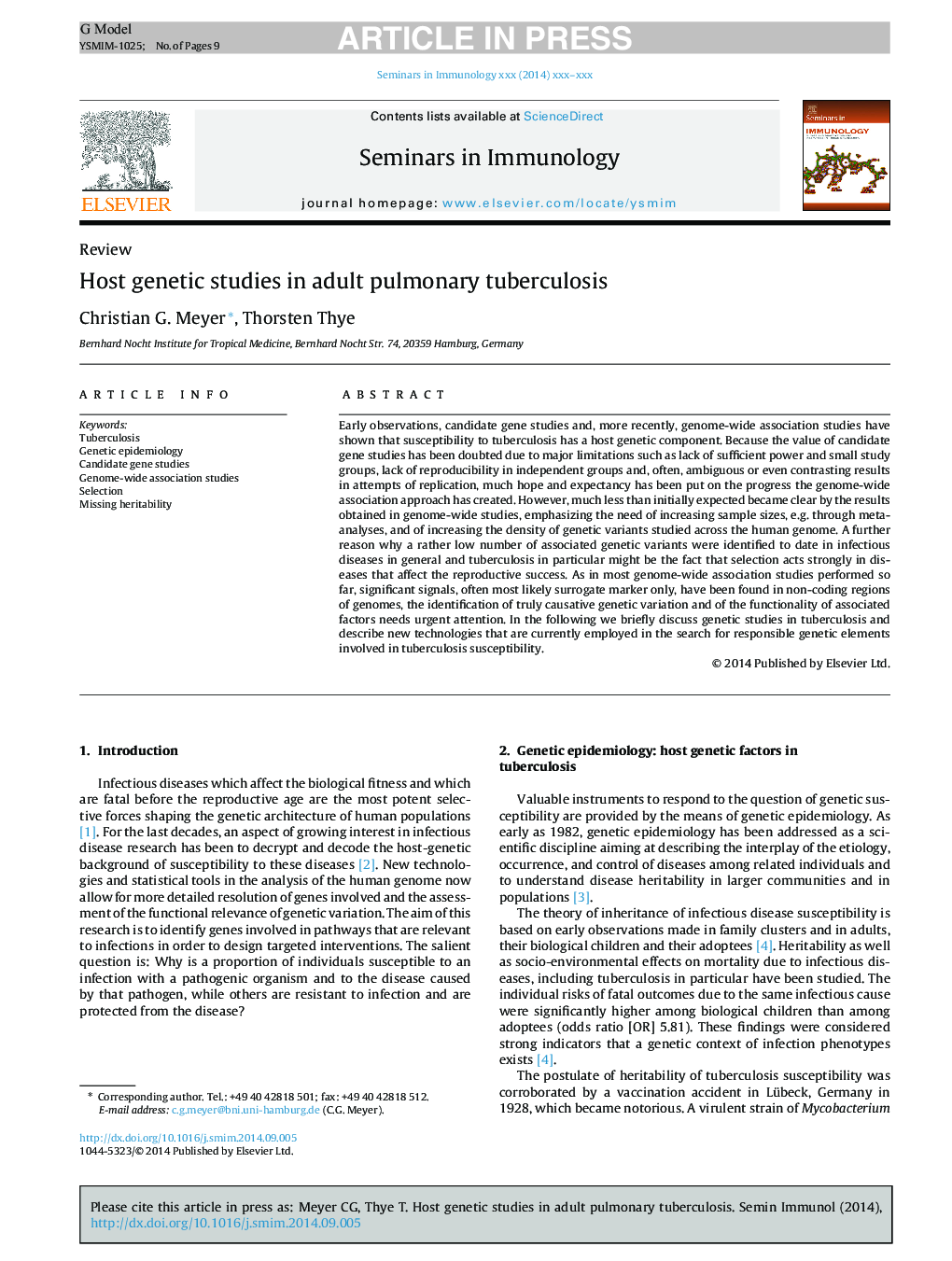| Article ID | Journal | Published Year | Pages | File Type |
|---|---|---|---|---|
| 6125882 | Seminars in Immunology | 2014 | 9 Pages |
Abstract
Early observations, candidate gene studies and, more recently, genome-wide association studies have shown that susceptibility to tuberculosis has a host genetic component. Because the value of candidate gene studies has been doubted due to major limitations such as lack of sufficient power and small study groups, lack of reproducibility in independent groups and, often, ambiguous or even contrasting results in attempts of replication, much hope and expectancy has been put on the progress the genome-wide association approach has created. However, much less than initially expected became clear by the results obtained in genome-wide studies, emphasizing the need of increasing sample sizes, e.g. through meta-analyses, and of increasing the density of genetic variants studied across the human genome. A further reason why a rather low number of associated genetic variants were identified to date in infectious diseases in general and tuberculosis in particular might be the fact that selection acts strongly in diseases that affect the reproductive success. As in most genome-wide association studies performed so far, significant signals, often most likely surrogate marker only, have been found in non-coding regions of genomes, the identification of truly causative genetic variation and of the functionality of associated factors needs urgent attention. In the following we briefly discuss genetic studies in tuberculosis and describe new technologies that are currently employed in the search for responsible genetic elements involved in tuberculosis susceptibility.
Keywords
Related Topics
Life Sciences
Immunology and Microbiology
Immunology
Authors
Christian G. Meyer, Thorsten Thye,
